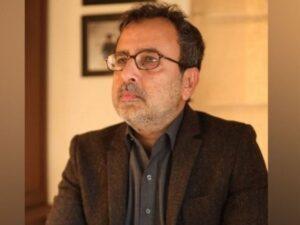Islamabad:
So far, the coalition government has hardly used RS424 billion or less than 40% of the annual downward revised development budget, which affects construction work and cash flow from hundreds of projects, including schemes from the provinces and merged districts in Khyber Pakhtunkhwa.
The only exceptions to lower expenses were the projects related to parliamentarians, Azad Jammu & Kashmir, Gilgit-Baltistan and Space & Upper Atmosphere Research Commission (Suparco), the official documents showed.
The official data from the Planning Commission showed that development costs from July to mid -April (nine and a half months) accounted for RS424 billion or 39% of the annual budget. The downward revised public sector development program is worth RS1.1 trillion spread over 1,071 projects.
During the Ministry of Finance’s release strategy, 60% of the annual budget can be used during the first nine months of this financial year. But the expenses remained under this threshold with at least RS260 billion. This is despite the fact that the Planning Commission had approved RS890 billion expenses during this period, but the actual expenses were far lower than the budget expenses and the authorized expenses.
When he was contacted, the planning minister Ahsan Iqbal said that compared to the last year the costs of the nine month period were still higher with RS102 billion. He said the monthly expenses in March this year were also higher with RS27 billion.
However, the details showed that despite being higher than last year’s consumption; The overall situation was not good, which affected many projects.
The official documents showed that the already approved RS1.1 trillion budget is not used sufficiently on development schemes.
According to these documents, the government had awarded RS276.5 billion for projects in provinces, special areas and merged districts in Khyber Pakhtunkhwa. However, the actual expenses until April 15 remained on RS98.5 billion or 36% of the annual allocation.
Within this expenses, an amount of RS56.6 billion was spent on AJK and GB projects, which was equal to 76% of the annual budget and higher than the ceiling.
But on the merged districts of KP, only RS15.8 billion or 23% of its allocation of RS70 billion was used. These merged districts are negatively affected by the terrorist attacks and are underdeveloped, yet it could not get the prime minister’s attention.
For the provincial projects, RS132 billion has been awarded, but the expenses remain at only RS26 billion or 20% of the annual allocation.
The Ministry of Planning did not answer a question of the annual award for Balochistan projects and the actual expenses of the first nine and a half months of this financial year.
But details showed that there were 200 federally funded projects that took place in Balochistan, which had a total cost of RS1.4 trillion. These projects need a little over RS1 trillion more for completion, and the government has already awarded RS130 billion for this financial year.
An official of the Planning Commission said the Ministry of Finance did not release the funds despite permission due to its international monetary fund -related obligations. But such restrictions did not affect the costs of the small schemes of parliamentarians.
Unlike the annual allocation of RS50 billion, RS35 billion or 69% of the annual budget is already spent on parliamentarians’ schemes in this financial year.
The Water Resource Ministry’s annual budget was RS170 billion, and so far RS71 billion or 42% of the annual allocation is spent. The Ministry of Water Resource has already requested additional RS60 billion coverage to use the foreign loans on its schemes. But the planning commission has so far been unable to provide coverage.
The National Highway Authority’s annual budget is RS161 billion, but the expenses only remain of RS54 billion or just over a third of the annual allocation. Balochistan’s project, which gets petroleum tax financing, is also under the purpose of NHA.
Power Davison’s annual budget is RS95 billion, but spending is only RS51 billion or just over half of the annual allocation.



